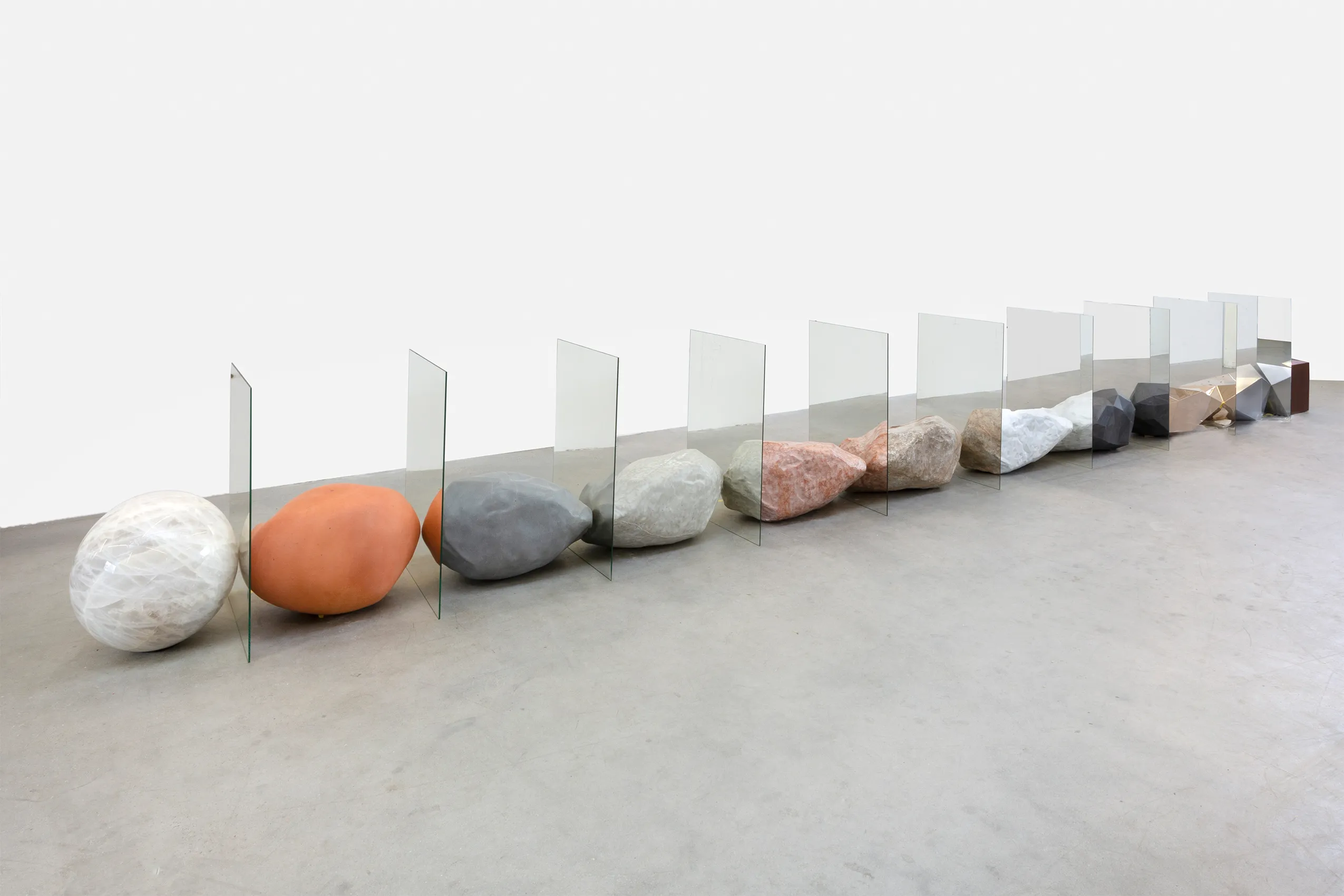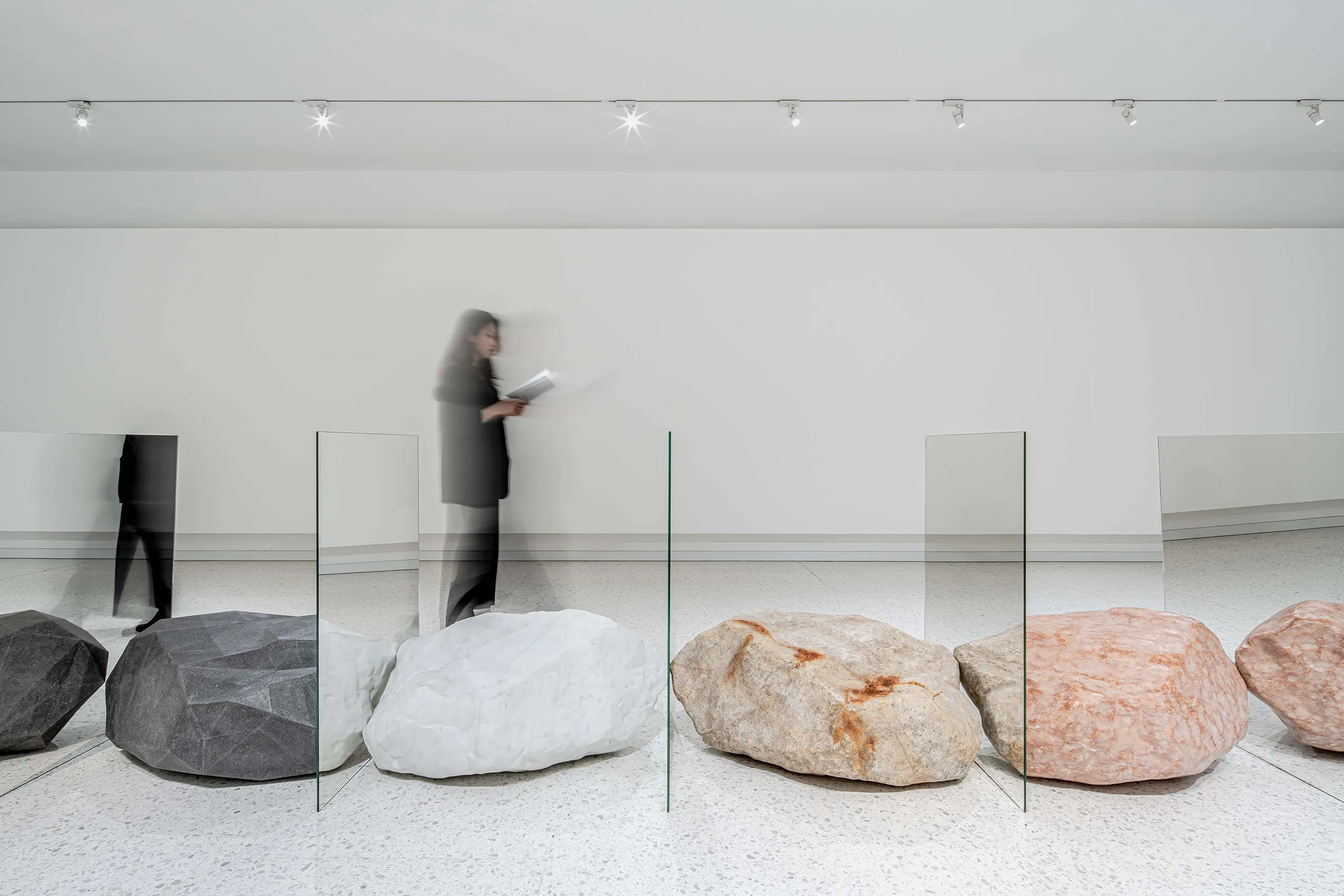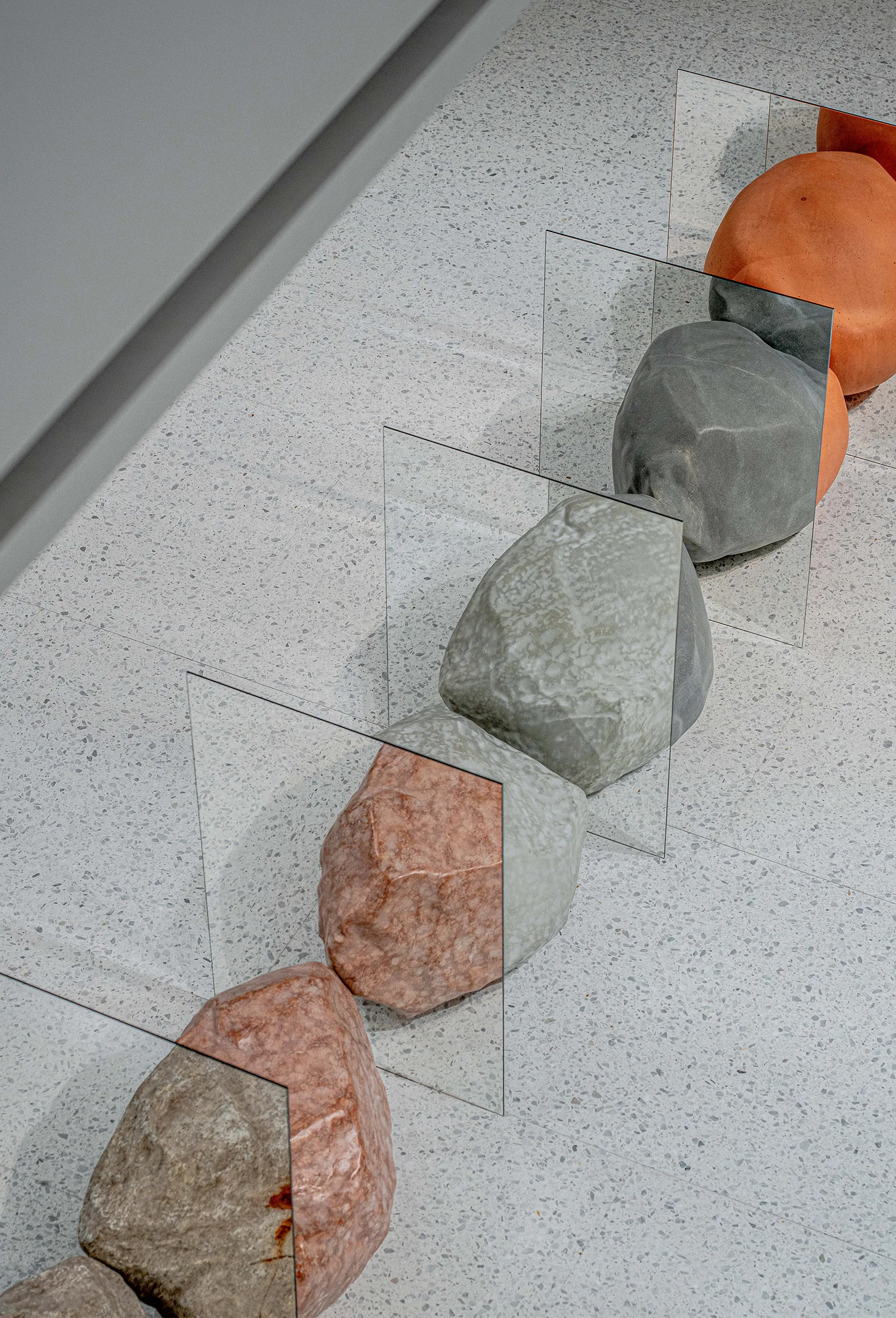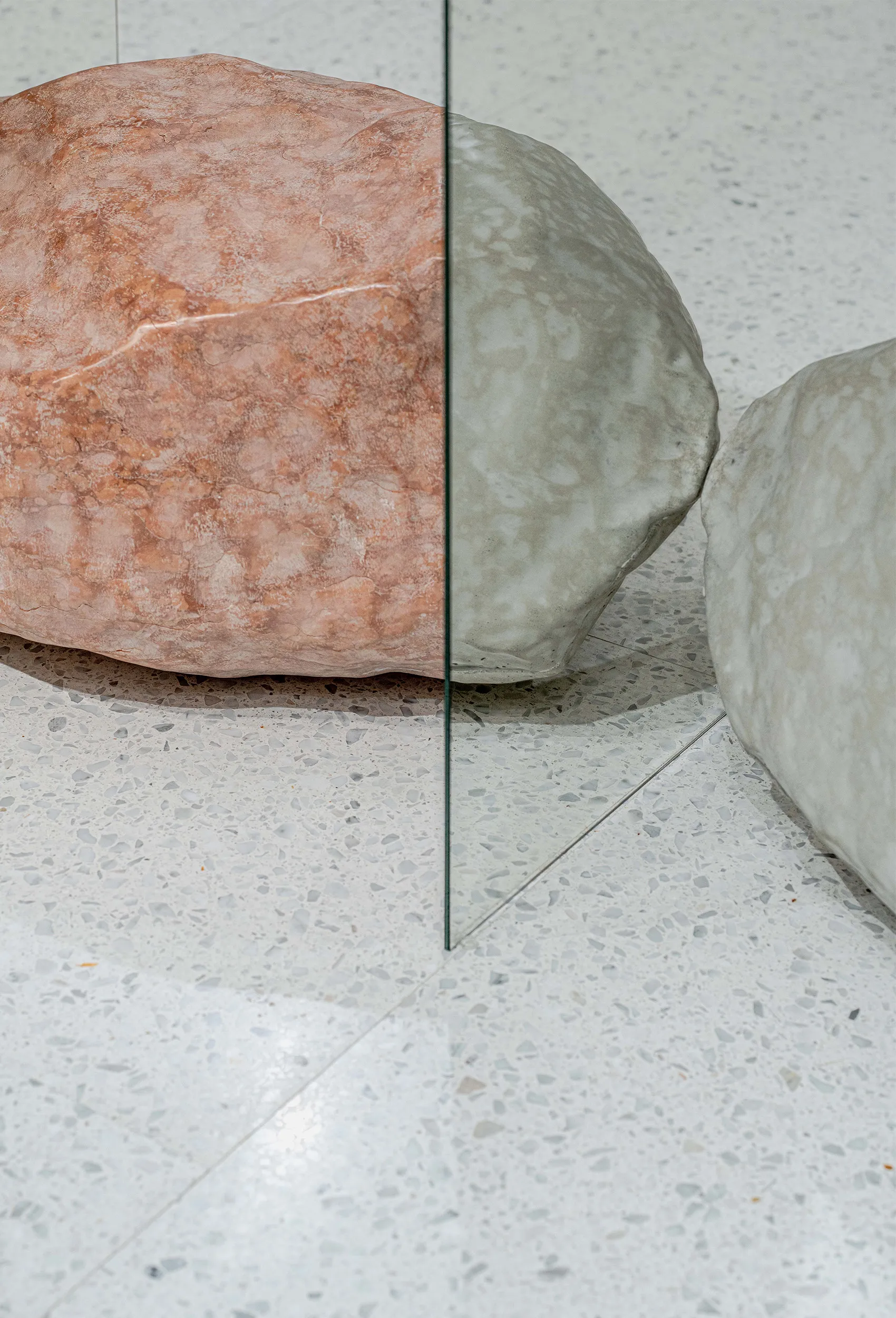Trans-For-Men 11 (Fibonacci)
Alicja Kwade
2019
Mirror, berg crystal, ceramic, sandstone, concrete, limestone, granite, marble, volcanic stone, bronze, aluminum, corten steel
96.8 x 870 x 66.7 cm
Winsing Arts Collection

Trans-For-Men 11 (Fibonacci)
Alicja Kwade
2019
Mirror, berg crystal, ceramic, sandstone, concrete, limestone, granite, marble, volcanic stone, bronze, aluminum, corten steel
96.8 x 870 x 66.7 cm
Winsing Arts Collection
Alicja Kwade adopted 3D printing technology and made the replicas of a rock. The work is composed of 11 rocks lined up on the floor. The genuine one is placed in the middle of all the rocks, and elements with the same volume extend to the left and the right. At the end of one side, the replica is turned into a cube, while at the end of the other side, the replica is transformed into a perfect sphere. The shapes of the replicas in different stages are determined by using Fibonacci sequence for calculation, and the golden ratio is thus achieved. These rocks represent not only themselves but all the possibilities among them, which all together form the praise of the malleability of Mother Nature.
Note: The Fibonacci sequence is commonly called the Fibonacci numbers. It starts from 0 and 1, and every following number is the sum of the two preceding ones. For example: 0, 1, 1, 2, 3, 5, 8, 13, 21, 34, 55, 89...





